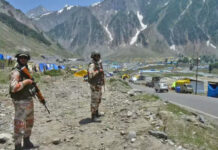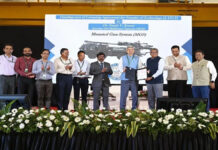Character-building just cannot be envisioned in isolation unless linked to culture. The NEP respects Gandhi’s vision of young Indians
Policies are formulated on the strong foundation of the outcomes of incisive analysis of past experiences coupled with futuristic vision that could respond to emerging issues, concerns and aspirations. Gandhiji consistently articulated the India of his dreams and his concerns about the impediments ahead. These are evident in the seven social sins he published in the Young India of October 22,1925. These are: politics without principles, wealth without work, pleasure without conscience, knowledge without character, commerce without morality, science without humanity and worship without sacrifice.
No policy, the one on education included, can ignore the contemporary severity of these sins. It could also be witnessed in the seven tensions identified in the report to UNESCO of the International Commission on Education for the 21st century— also known as the Delores Commission Report. These are the tensions between global and local, universal and individual, tradition and modernity, long-term and short term considerations, the need for competition and concern for opportunity, extraordinary expansion of knowledge and the human being’s capacity to assimilate, and finally, the conflict between the spiritual and the material. One could, in the present context, reformulate them but it would be perilous to neglect any of these. The “sins” are taking stronger roots while the “tensions” are disturbing human habitation and systems that are already under severe strains and pressures as consequences of declining moral, ethical and humanistic considerations.
An incisive scrutiny of the National Education Policy (NEP 2020) would indicate the extent to which both the sins and tensions need to be responded to, as is essential to prepare human beings imbued with character, commitment and concern. It acknowledges the guiding light it derived from the “rich heritage of ancient and eternal Indian knowledge and thought.” The pursuit of knowledge, wisdom and truth is considered the highest goal of human life. The NEP mentions, “The aim of education in ancient India was not just the acquisition of knowledge as preparation for life in this world, or life beyond schooling, but for the complete realisation and liberation of the Soul. World class institutions in India, such as Takshashila, Nalanda, Vikramshila and Vallabhi, set the highest standards of multi-disciplinary teaching and research and hosted scholars and students from across backgrounds and countries.” The ancient Indian system of education valued the pursuit of knowledge with the sole objective of utilising it for the welfare of humanity: “Let all be happy, let all be healthy; let all see good around and let none suffer pain of any kind.” Could there be a better comprehension of the essential unity of human beings as one family? And in a family, differences and diversities are accepted and respected. This is what the NEP has imbibed in word and spirit. It recalls how the products of ancient Indian education system strived tirelessly to make seminal contributions in diverse fields of knowledge, including mathematics, astronomy, metallurgy, surgery, health, architecture, engineering, ship building, navigation, yoga, fine arts and so much more. Every Indian student – inheritor of this great legacy – must be made familiar with it and accept the responsibility to enhance it further through excellence in his chosen area of activity and expertise. Each one of them is an inheritor of the legacy of luminaries like Charak, Susruta, Aryabhata, Bhaskaracharya, Brahmagupta, Nagarjuna, Gautama, Maitreyi, Gargi and Thiruvalluvur.
Once the NEP 2020 is implemented appropriately, no Indian shall remain “delinked from India.” Every learner would be exposed to modern knowledge that would be given to him/her in institutions following the most modern pedagogy, and with due emphasis on critical thinking, creativity and innovations. It would aim at developing a student’s full human potential. Higher education, the NEP-2020 acknowledges, must aim to develop good, thoughtful, well rounded and creative individuals. Obviously, the school education would take note of these aspects in the most sensitive years. Recommendations on multi-disciplinary universities, robust autonomy, revamping of curriculum and pedagogy, reforms in governance of higher education Institutions (HEIs), creation of National Research Foundation (NRF) and National Educational Technology Forum (NETF) would be positive additions to the quality and contemporary relevance of the future model of Indian education.
India could finally turn into an international education hub and certainly attract attention of the corresponding international institutions. The proposed changes in structure, flexibility, autonomy, pedagogy, multi-dimensionality, assessment procedures, including transfer of credit systems, would remove several agonising technicalities. The availability of internationally relevant curricula in the history, heritage and culture of India, as also modern subject areas, could attract a sizeable number of foreign students, helping us achieve the goal of “internationalisation at home.” Some well-thought out suggestions like opening of foreign campuses by established Indian institutions and permitting top international universities to operate in India would effectively put Indian education firmly on the international podium, with dignity, credibility and expectations. Shared courses with reputed international institutions could pave the way for a much-needed morale boosting and encourage our young to compete with and excel among foreign students. One has to be cautious about certain aspects though. Global credibility and recognition would require certain minimum levels of infrastructure and facilities which, sadly enough, are still missing in a large number of education institutions across the board. The NEP 2020 assures availability of all of these: “Every classroom shall have access to the latest educational technology that enables better learning experiences.” There can be no compromise on the professionally acceptable teacher-taught ratio. This raises several related requirements. Quality just cannot be raised by engaging guest teachers, teachers on lecture-based payments, para teachers and keeping more than a million posts of school teachers vacant for decades together! In HEIs, the quality of products, research and innovations would be greatly impeded if there are 40-60 per cent vacant academic positions. The NEP 2020 boldly acknowledges this concern and articulates: “The teacher must be at the centre of the fundamental reforms in the education system. The new education policy must help re-establish teachers, at all levels, as the most respected and essential members of our society, because they truly shape our next generation of citizens. It must do everything to empower teachers and help them do their job as effectively as possible.” Expressing serious concern on the quality of teacher education, the recommendation is to replace by 2030 all of the present one-year school teacher preparation programmes by four-year integrated teacher education programmes. It may be worthwhile to recall that the four-year integrated teacher preparation programmes began in the four institutions of the NCERT in 1964-64, and the products were indeed far ahead of others in their professional performance in schools and teacher education institutions. Unfortunately, the module was not replicated.
In higher education, the policy acknowledges the “criticality, quality and engagement” of the faculty. It also accepts that “faculty motivation” remains far lower than the desired level. Several steps have been listed to attract “the best, motivated, and capable faculty in the HEIs.” The right-teacher-student ratio, access to education technology, freedom to design their own curricular and pedagogical approaches, incentives like appropriate rewards, promotions, recognition and movement into institutional leadership are included in the list.
In his book of 1932, Remakers of Mankind, Carl Washburne writes that when asked, “What is your goal in education when India obtains self-rule?”, Gandhi answered, “Character-building. I would try to develop courage, strength, virtue, the ability to forget oneself in working towards great aims. This is more important than literacy; academic learning is only a means to this great end.” Character formation was the strength of the traditional Indian system of knowledge quest that included creation, generation, utilisation and transfer of knowledge to generations ahead. With all the experiences gained globally in varying contexts and approaches, it is now accepted globally that education in every country must be rooted to culture and committed to progress. Character-building just cannot be envisioned in isolation unless linked to culture. No culture would flourish in isolation and our youth can become global citizens only when they are made well aware and conversant with their own culture before being introduced to others. India painfully suffered as the transplanted system that deliberately kept young “educated” Indians away from getting familiar with the nuances of their own culture; they were systematically indoctrinated in the “superiority of the Western culture.” This was very comprehensively articulated by Gandhiji in the Young India of September 1,1921, “It is my firm opinion that no culture has a treasure so rich as ours. We have not known it, we have been made even to depreciate its value. We have almost ceased to live it.” Let us hope that the proposed educational reforms would prepare young people with credentials, and they would be looking after the masses. Education must lead to human dignity for one and all.




























